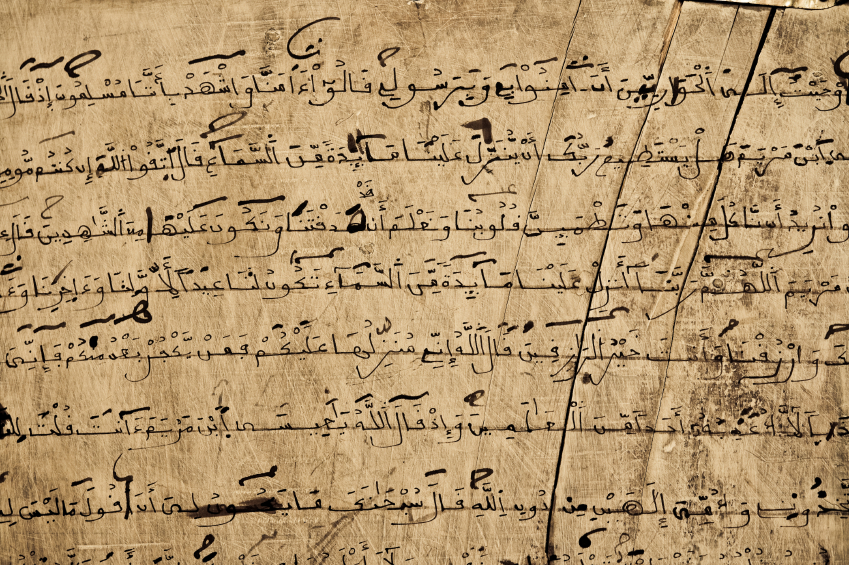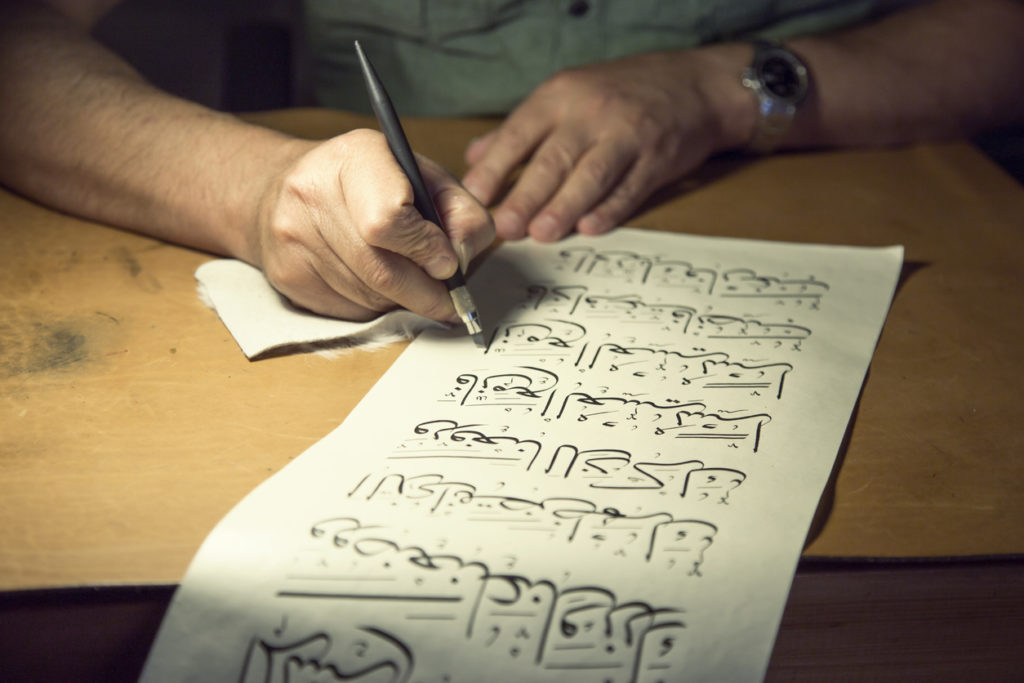السلام عليكم

Continuing from Shaykh Ibn Uthaymeen’s قواعد في الإملاء (Rules for Writing), we learn when to write the hamzah (ء) in its various forms.
The hamzah can occur in the:
- beginning of a word
- end of a word
- middle of a word
When hamzah occurs at the beginning of a word
In this case the hamzah is always written in the alif form (أ or إ). For example, in أُكْرِم أَبُوْكَ إكْرامًا (your father was honored an honoring), all three words have the hamzah in the beginning.
When hamzah occurs at the end of a word
At the end of the word, hamzah is:
- sometimes written as itself (ء):
- If the letter before it has a waw with dhammah and a shaddah (وًّ). For example: التَبَوُّءُ
- If the letter before it has sukun on it. For example: دِفْء (warmth), قُرُوْء (menstrual cycles), دُعاء (invocation), and مَلِيْء (filled)
- An exception would be if the hamzah is nasb-ized with tanwin and it is possible to connect it to the silent letter. It would then be written over a ي. For example: خِطْئًا كَبِيرًا and شَيْئًا مَذْكُوْرًا
- sometimes written on a letter that resembles the vowel on before it
- Upon a waw (و), as in التَواطُؤُ
- Upon an alif (ا), as in قَرَأَ
- Upon a yaa (ي) as in قُرِئَ
When hamzah is in the middle of a word
In this case, it can be written:
[Read more…] about Rules for writing hamzah



